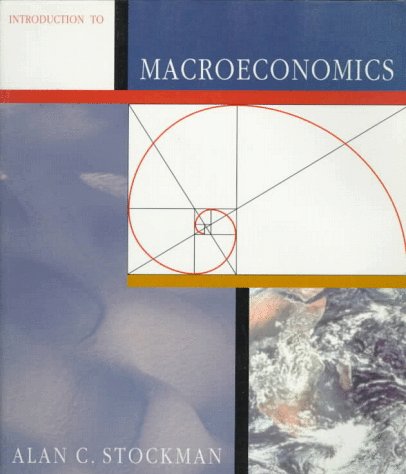Taking a more interdisciplinary approach to economics than most other texts, this new title provides more discussion of how economics relates to major social and political issues and includes a real-life flavour. The author takes an applied-price theory approach to microeconomics and a more modern neo-classical approach to macroeconomics. The text's reader-friendly organization separates main points from explanations and examples, enhancing student understanding and helping students review chapters with less study time. Features: * Stockman's new title focuses on today's economic framework allowing an understanding of current economic conditions by providing a truly balanced approach. * This textbook focuses on long-run macroeconomics issues prior to the short run. By examining long-term economic growth, issues of productivity, development of technology, and long-term business cycles, Stockman introduces the student to macroeconomic models that reflect current economic, social, and political realities.
* Taking a "seeing economics/using economics" approach to presenting the core concepts, Stockman's "applications-oriented" method incorporates detailed examples, and critical analysis to aid student's understanding. * Basic supply and demand is not only used to introduce microeconomics, it also provides the foundation for the core macroeconomic material. This effectively postpones Aggregate Demand/Aggregate Supply, which can prove to be overly complex to many students at this juncture, until they are better prepared to grasp this material. * The use of supply and demand for loans to study equilibrium macroeconomics demonstrates the importance of intertemporal choice and real interest rates as a price that allocates resources. This is another example of incorporating micro foundations into the presentation of macroeconomics. * An extensive collection of news clippings illustrate the everyday relevance of economic concepts discussed in the text and helps students learn to think like economists as they encounter the daily news. "Business Decision-Making" and "Personal Decision-Making" features ask students to incorporate economic concepts into their everyday choices.
* A strong emphasis on how economics relates to major social and political issues stimulates student interest and ties economics to students' lives. End-of-chapter "Inquiries for Further Thought" sections for example, raise questions challenging students to apply economics and use economic analysis to formulate positions on important issues. * Microeconomics chapters take an applied-price theory approach. Students learn economic reasoning by applying price theory repeatedly to a variety of issues. * Using supply and demand extensively, students learn how to apply these tools to such applications as safety, honesty, time prices, international trade, and speculation. * Separate chapters on game theory, economics of information, and economics of law and public choice (chapters 15, 19, 22) provide unified discussions of important concepts in economic theory, with extensive and wide-ranging applications. * The text's distinctive chapters on monetary and fiscal policy (chapters 32-33) emphasize laissez-faire versus activist views of government policy and debates about rules versus discretion. * Three chapters are devoted to real business cycle theory and applications.
- ISBN10 0030311330
- ISBN13 9780030311338
- Publish Date 1 April 1999 (first published 25 January 1999)
- Publish Status Active
- Out of Print 5 January 2005
- Publish Country US
- Publisher Cengage Learning, Inc
- Imprint South-Western
- Format Paperback
- Pages 696
- Language English
